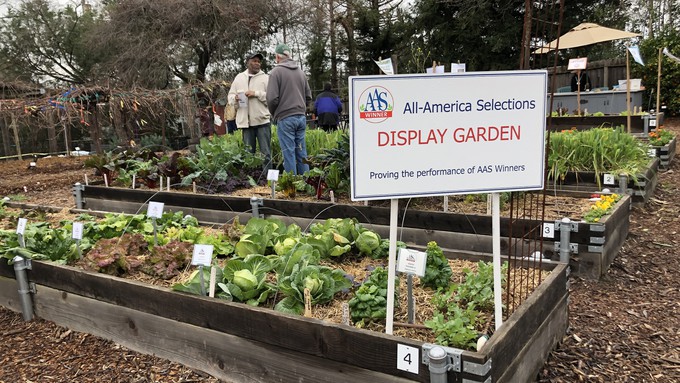
Sacramento master gardeners host Open Garden Day

The vegetable garden at the Fair Oaks Horticulture Center will a showcase of cool-season vegetables at Open Garden Day, as in this photo from an earlier February. Kathy Morrison
Get ready for spring with expert advice from Sacramento County master gardeners.
On Saturday, Feb. 11, the master gardeners will host Open Garden Day at the Fair Oaks Horticulture Center in Fair Oaks Park – rain or shine. Admission and parking are free.
From 9 a.m. to noon, watch master gardeners as they tend to mid-winter tasks and prepare for spring planting and rapid growth. They’ll also host several hands-on demonstrations including:
* Berries: Learn how blueberries and cane berries are pruned for the upcoming harvest season.
* Compost: Building, turning and harvesting compost. Visit the Worm Bin, too.
* Herbs: See Herbs flourishing in the cooler weather.
* Orchard: Bare branches in the orchard show proper pruning cuts.
* Vineyard: See canes getting ready to bud. Learn pruning basics.
* Vegetables: Cool-season vegetables are on display in raised beds.
* WEL: The water-efficient landscape will be full of overwintering beneficial insects ready for pests.
Got a garden mystery, problem pest or puzzling plant? Bring photos and/or samples (in a sealed plastic zipper bag) to the Ask a Master Gardener table.
Fair Oaks Horticulture Center is located at 11549 Fair Oaks Blvd., Fair Oaks.
Details and directions: https://sacmg.ucanr.edu.
Comments
0 comments have been posted.Sacramento Digs Gardening to your inbox.
Sites We Like
Garden Checklist for week of July 21
Your garden needs you!
* Keep your vegetable garden watered, mulched and weeded. Water before 8 a.m. to reduce the chance of fungal infection and to conserve moisture.
* Feed vegetable plants bone meal, rock phosphate or other fertilizers high in phosphate to stimulate more blooms and fruiting. (But wait until daily high temperatures drop out of the 100s.)
* Don’t let tomatoes wilt or dry out completely. Give tomatoes a deep watering two to three times a week.
* Harvest vegetables promptly to encourage plants to produce more. Squash especially tends to grow rapidly in hot weather. Keep an eye on zucchini.
* Pinch back chrysanthemums for bushy plants and more flowers in September.
* Remove spent flowers from roses, daylilies and other bloomers as they finish flowering.
* Pinch off blooms from basil so the plant will grow more leaves.
* Cut back lavender after flowering to promote a second bloom.
* It's not too late to add a splash of color. Plant petunias, snapdragons, zinnias and marigolds.
* From seed, plant corn, pumpkins, radishes, winter squash and sunflowers.